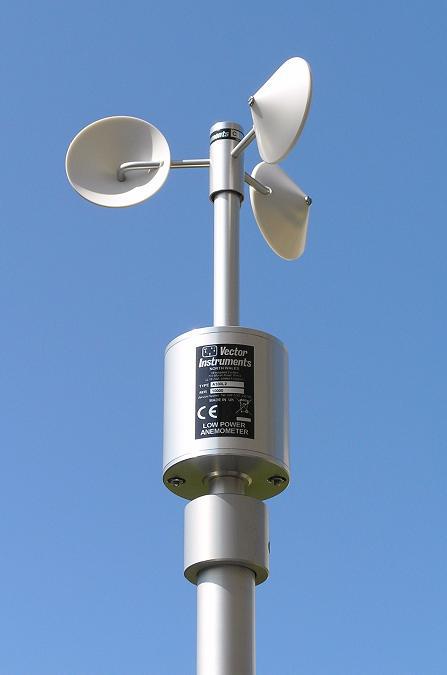Recognizing Various Kinds Of Anemometers for Various Applications
Recognizing Various Kinds Of Anemometers for Various Applications
Blog Article
All You Required to Learn About Anemometers: Just How They Function, Why They Issue, and Where to Utilize Them
Anemometers, though commonly neglected in the world of scientific tools, play an essential role in numerous fields, offering useful insights into wind rate and air flow patterns. As we dig into the complexities of anemometer technology, we will certainly reveal the inner functions of these gadgets, their significance, and the crucial factors to consider when choosing the best anemometer for particular applications.

Anemometer Essentials
An essential instrument utilized to measure wind rate and direction, the anemometer plays a crucial function in weather forecasting and different markets. An anemometer typically consists of three or four cups that rotate in the wind, a vane that points into the wind, and sensing units to track the rotations or movements.
There are numerous kinds of anemometers available, consisting of mug anemometers, vane anemometers, hot-wire anemometers, and sonic anemometers, each with its unique attributes and applications. Cup anemometers are frequently made use of for fundamental wind rate measurements, while vane anemometers are chosen for directional dimensions. Hot-wire anemometers appropriate for low airspeeds, and sonic anemometers are optimal for high-precision dimensions in study and industrial setups. Understanding the essentials of anemometers is crucial for exact wind data collection and evaluation across various industries.
Concepts of Anemometer Procedure
Structure on the fundamental understanding of anemometer essentials, the concepts of anemometer operation elucidate the technicians behind wind rate and direction dimensions. Cup anemometers, for instance, have three or more mugs that capture the wind, triggering them to rotate much faster as the wind rate boosts. Hot-wire anemometers count on a warmed wire that cools down as wind passes over it, with the price of cooling identifying the wind rate.
Relevance of Anemometers
Anemometers play a crucial function in gauging wind rate and direction, giving necessary data for climate forecasting, climate research studies, ecological tracking, and air travel operations. Meteorologists depend on anemometers to gather accurate wind information, aiding them recognize weather condition patterns, anticipate storms, and problem timely warnings to the public. Wind ranch operators use anemometers to analyze wind conditions and make the most of electricity production from wind generators.
Applications Throughout Numerous Industries
Applications of anemometers span anchor across diverse industries, showcasing Continue their convenience and energy beyond meteorology. In the renewable power field, anemometers play an important role in examining wind conditions for wind farm placements, making certain optimal power production. Industries like building and construction and mining use anemometers to keep an eye on wind rates, crucial for safety procedures, specifically when operating at heights or in open-pit mines where solid winds can position risks. Anemometers are additionally indispensable in the air travel industry, assisting pilots in recognizing airspeed and wind direction for risk-free liftoffs and landings. The maritime market gain from anemometers for ship navigation, aiding seafarers prepare for weather changes and adjust courses appropriately. In farming, anemometers aid farmers in taking care of plant splashing by giving real-time information on wind rate to stay clear of drift. Moreover, anemometers discover applications in HVAC systems to maximize airflow and boost energy efficiency in structures. The diverse use cases of anemometers highlight their importance across different markets, highlighting their important duty in improving functional security and performance (anemometer).

Selecting the Right Anemometer for Your Needs
Choosing the appropriate anemometer tailored to your specific needs is important for getting exact wind rate and instructions dimensions. When choosing an anemometer, take into consideration factors such as the designated application, called for measurement array, environmental problems, and wanted features. For general purposes, a cup anemometer is appropriate for determining wind speed, while a vane anemometer offers wind read direction data. Hot-wire anemometers are excellent for low airspeed measurements, and ultrasonic anemometers offer high accuracy and sturdiness.

Final Thought
In conclusion, anemometers play a crucial role in gauging wind rate and direction across numerous industries. Comprehending the principles of anemometer procedure is essential for picking the best gadget for specific needs. From meteorology to aeronautics, anemometers are essential tools for ensuring and gathering exact information safety and security in various applications. It is important to think about the value of anemometers in order to make enlightened decisions when selecting the most appropriate gadget for measuring wind conditions.
There are different types of anemometers readily available, including cup anemometers, vane anemometers, hot-wire anemometers, and sonic anemometers, each with its unique attributes and applications. Mug anemometers are frequently utilized for fundamental wind rate dimensions, while vane anemometers are preferred for directional measurements. Hot-wire anemometers are appropriate for low airspeeds, and sonic anemometers are perfect for high-precision measurements in research and industrial settings.Structure on the fundamental understanding of anemometer fundamentals, the concepts of anemometer procedure clarify the mechanics behind wind speed and direction measurements. For basic objectives, a mug anemometer is ideal for measuring wind rate, while a vane anemometer provides wind direction information.
Report this page